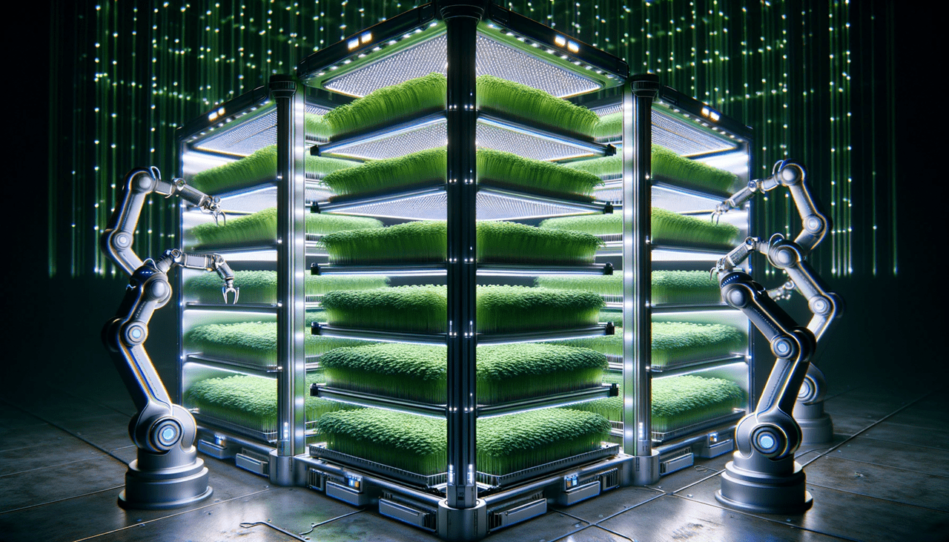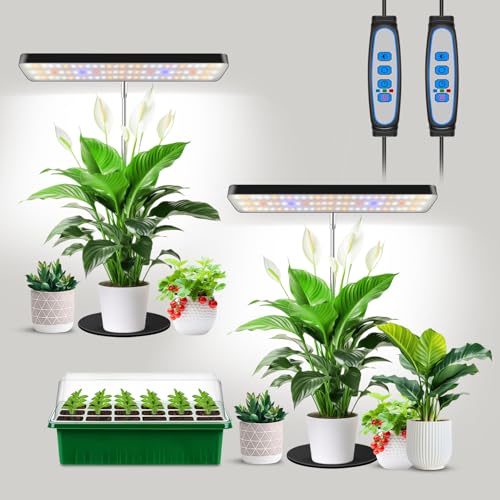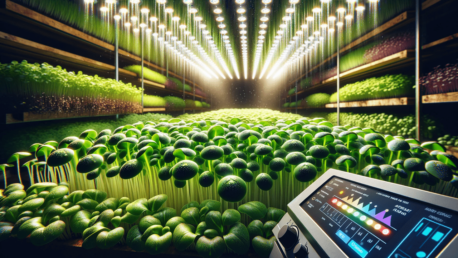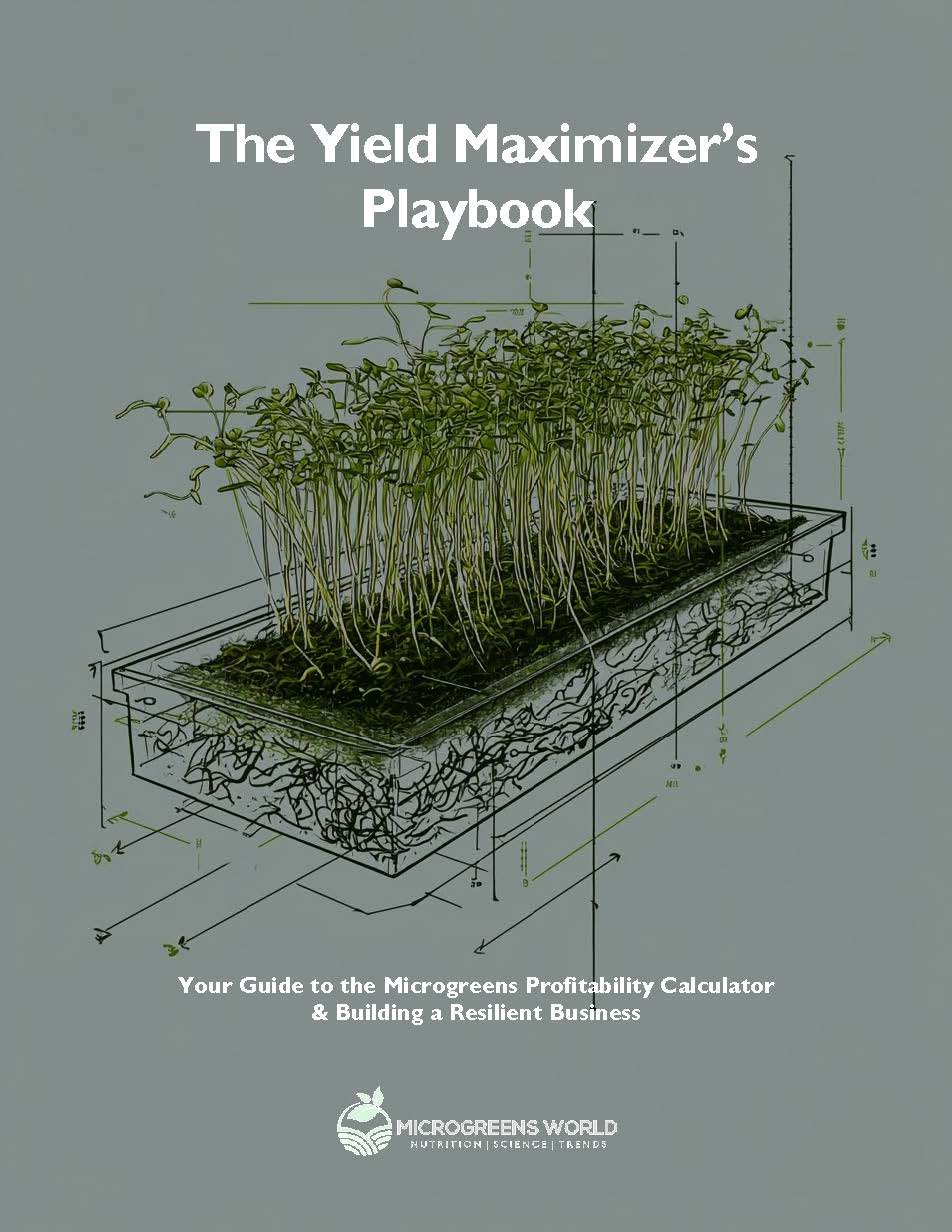In the 2006 article “Growing Microgreens: Maybe the Ultimate Specialty Crop,” Nancy Roe explored the then-niche world of microgreen cultivation. She highlighted the varieties being grown, their unique appeal to high-end chefs, and the techniques used in their cultivation. Roe’s article emphasized the burgeoning potential of microgreens in both nutritional and culinary spheres.
From 2006’s niche garnish to 2024’s widespread health trend, microgreens saw a surge in popularity. Advancements in hydroponics and aeroponics expanded their variety and scale, aligning with sustainable urban farming and nutritional awareness, evolving from upscale restaurant garnishes to staples in diverse culinary and health-conscious diets.
Fast forward to today, the landscape of microgreen cultivation has evolved significantly. Technological advancements, deeper nutritional understanding, and shifting consumer preferences towards sustainable and locally sourced foods have dramatically expanded the microgreen market. Despite these changes, the core appeal of microgreens — their nutritional density and versatility — has remained a constant.
In this post, I explore this blend of continuity and evolution in the microgreen industry that sets the stage for our exploration of its past, present, and future.
- The Evolution of Microgreen Cultivation
- Nutritional Science and Microgreens
- Advances in Microgreens’ Sustainable Growing
- Market Trends and Consumer Shifts
- Technological Innovations in Microgreen Farming
- The Future of Microgreens
- Practical Applications for Microgreens
- Key Takeaways
- Related Questions
- References
The Evolution of Microgreen Cultivation
Since Nancy Roe’s 2006 article, microgreen cultivation has seen substantial advancements, particularly in growing techniques and developing new varieties. The adoption of hydroponic and aeroponic systems has been a significant step forward. These systems allow for more efficient and sustainable growth of microgreens by ensuring precise control of nutrient delivery and water use. Innovations in LED lighting technology have also played a key role, providing energy-efficient lighting optimized for plant growth.
In terms of their variety, there’s been a surge in the number of microgreen species cultivated. This expansion includes traditional salad ingredients and more exotic plants, broadening the culinary uses of microgreens. Genetic research has contributed significantly to this diversity. Scientists have focused on enhancing certain traits such as flavor, color, and, most importantly, nutritional value. For instance, certain microgreens have been developed to have higher concentrations of vitamins and antioxidants.
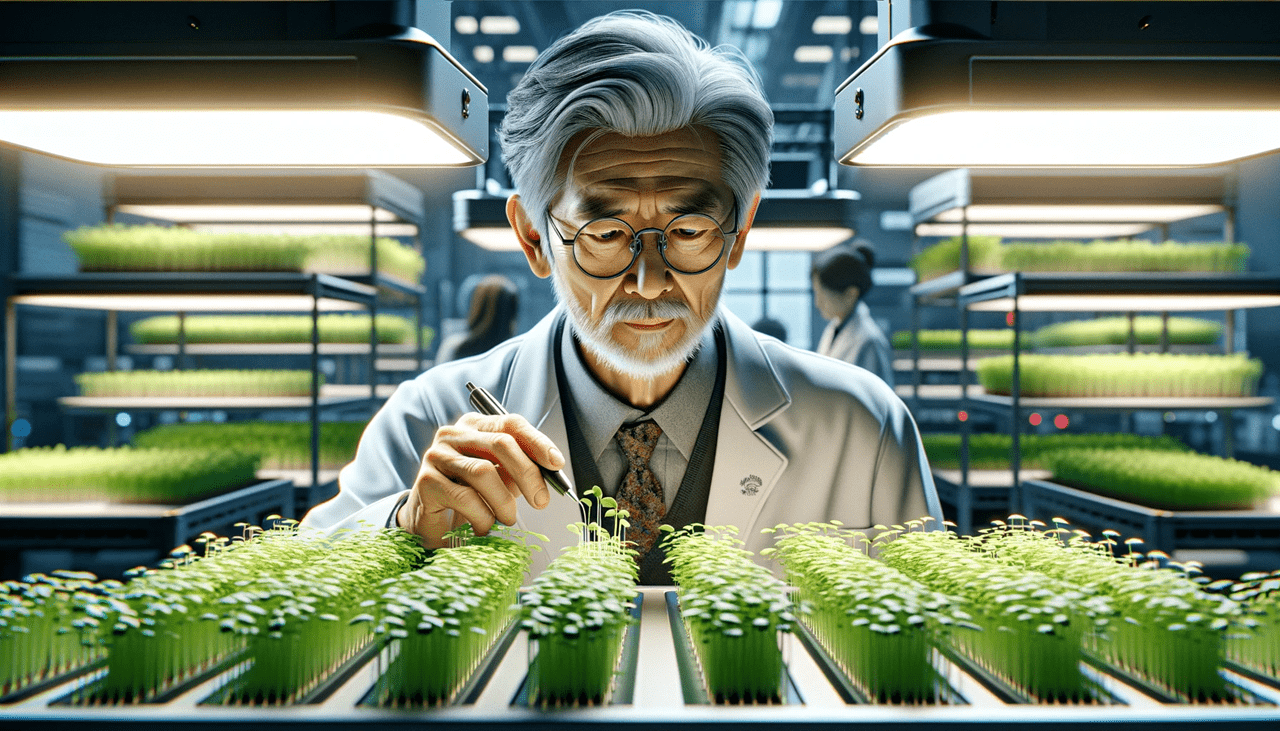
The term “microgreens” was coined by agricultural scientist Dr. Shih-Chen Chang in the 1990s when he conducted experiments on edible crops at the University of California, Davis. He found that these baby seedlings contained higher nutrient levels than their mature counterparts, making them an excellent addition to any diet.
These advancements have not only made microgreen farming more accessible and efficient but also turned it into a dynamic segment of modern agriculture. The industry is now characterized by adaptability and innovation, responding swiftly to consumer demands and environmental challenges.
Nutritional Science and Microgreens
In recent years, numerous studies have highlighted the exceptional nutritional benefits of microgreens. They are found to be rich in vitamins, minerals, and antioxidants, often containing higher nutrient levels than their mature counterparts.
For instance, some microgreens such as red cabbage, cilantro and garnet amaranth have up to 40 times higher levels of essential nutrients compared with their older plants, according to a study conducted by the US Department of Agriculture. This study highlights the potential of microgreens as a superfood, offering a concentrated source of vitamins and antioxidants beneficial for health and wellness.
These findings have significant implications for dietetics and nutrition therapy. Microgreens can address nutritional deficiencies, improve dietary diversity, and manage chronic diseases. Their high nutrient density makes them particularly valuable for individuals with limited caloric intake. Furthermore, the variety in flavor and texture that microgreens offer can enhance the appeal of nutritious diets, encouraging healthier eating habits.
Moreover, emerging research suggests potential therapeutic uses of microgreens in disease prevention and management. Their high antioxidant content, for example, is linked to reduced risk of certain cancers, cardiovascular diseases, and age-related degenerative diseases.
These studies collectively suggest that incorporating microgreens into the diet could be a simple yet effective way to boost nutritional intake, especially in populations with limited access to fresh vegetables. Microgreens’ high concentration of nutrients also points to their potential use in clinical nutrition therapy and disease prevention, highlighting their role in promoting overall health and well-being.
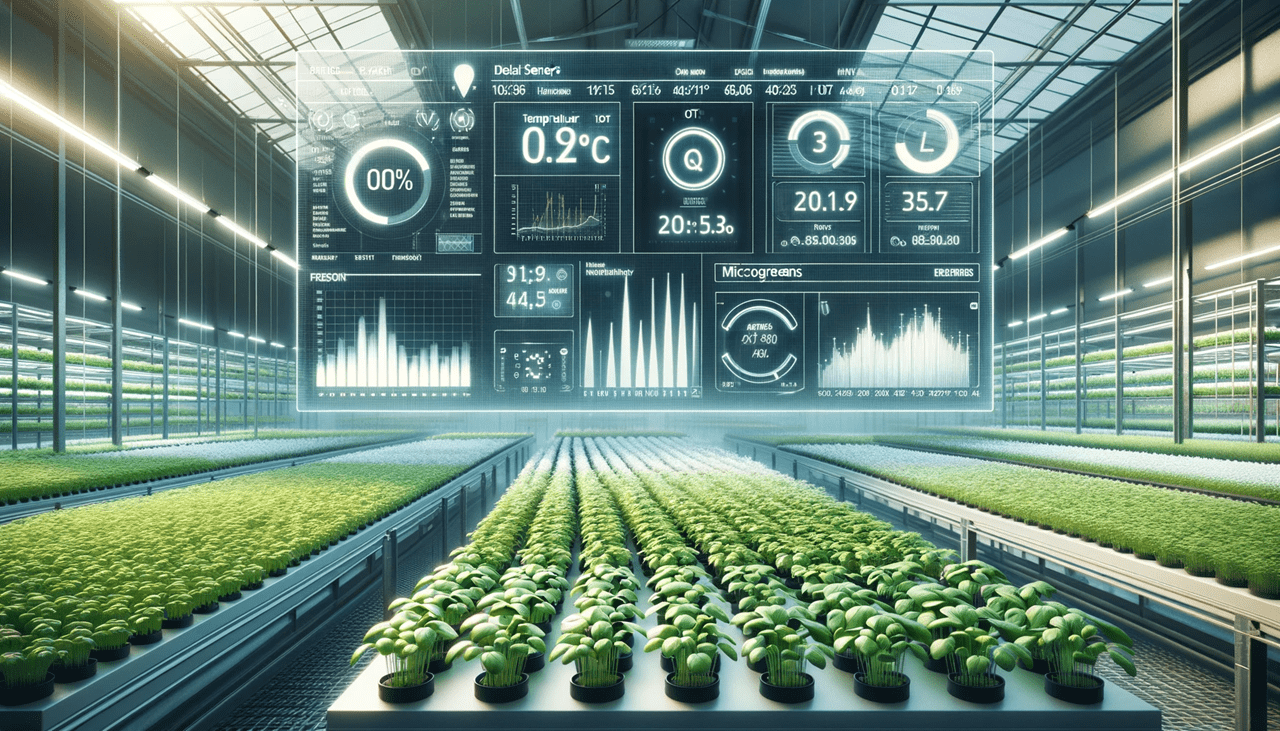
Advancements in pest management and sustainability in microgreen farming have significantly evolved, mainly focusing on organic and environmentally friendly methods. The integration of organic pest control techniques, such as beneficial insects like ladybugs and green lacewings, has become increasingly prevalent. These natural predators effectively manage pests like aphids and mites without the need for chemical pesticides, aligning with the organic ethos of many microgreen growers. Additionally, organic, non-toxic sprays based on natural substances like neem oil have become more prevalent.
In terms of sustainability, microgreen cultivation has embraced practices like water conservation and recycling. Composting organic waste from microgreen production is now standard, turning potential waste into valuable soil amendments. Solar energy is being increasingly harnessed to power growing operations, reducing the carbon footprint.
Hydroponic systems, now widely used in microgreen farming, significantly reduce water usage by recirculating water and nutrients. This closed-loop system minimizes waste and enhances the sustainability of the cultivation process.
Moreover, adopting compostable and biodegradable growing mediums aligns with the environmentally conscious approach of the industry. These mediums provide a nutrient-rich environment for microgreens and ensure that post-harvest waste is minimized and environmentally benign.
These developments in sustainability practices enhance the ecological footprint of microgreen farming and appeal to consumers increasingly seeking out sustainably grown produce.
These methods exemplify the commitment to eco-friendly practices in modern microgreen farming, demonstrating a balance between efficient production and environmental responsibility.
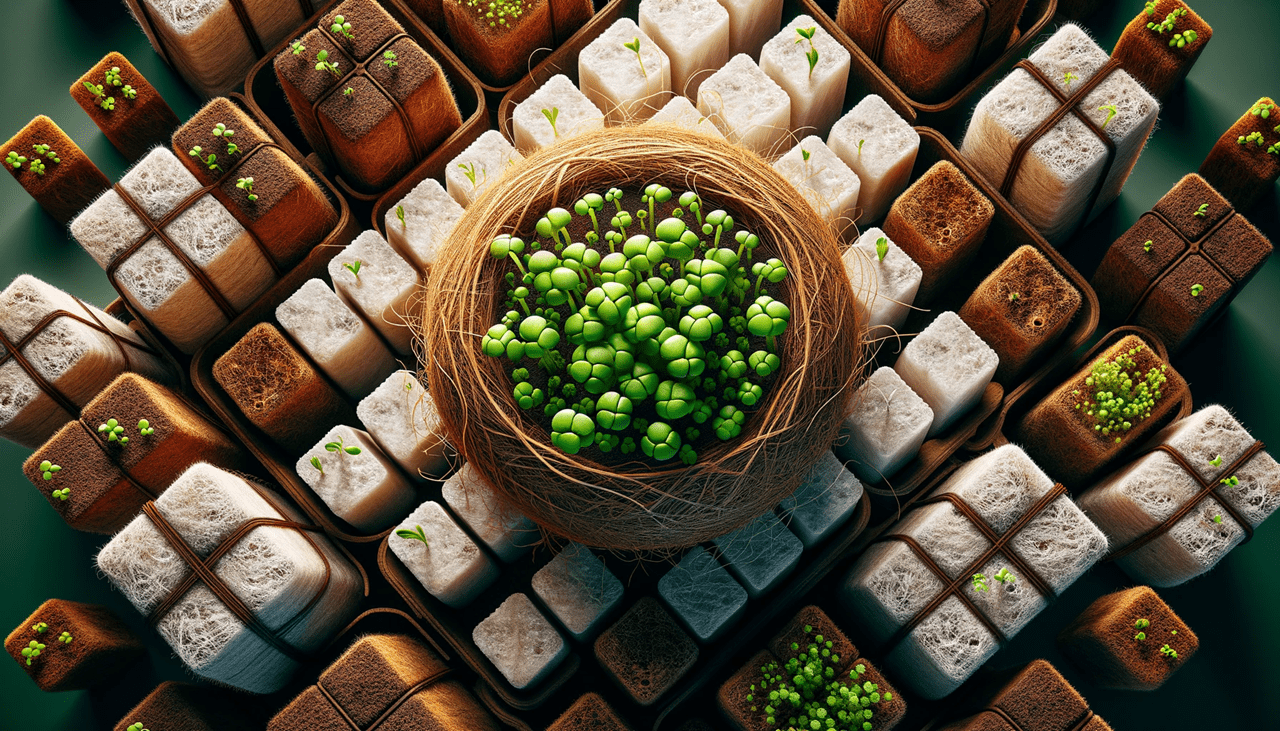
The global microgreens market has experienced significant growth, driven by changing consumer preferences toward healthier and more sustainable food options. Increased demand for nutrient-dense, locally-grown produce results from this shift. Microgreens, with their high nutritional value and lower environmental impact than traditional crops, have become particularly popular.
This trend is also influenced by the rising awareness of sustainable agriculture practices. Consumers are more inclined to support farming methods that use fewer resources and minimize waste, characteristic of microgreen cultivation. The market expansion is not just limited to health food stores and upscale restaurants; microgreens are increasingly found in some mainstream supermarkets and are used in various culinary applications.
The growth of the microgreens market is a clear indicator of a broader shift in consumer behavior, where health, taste, and sustainability are key purchasing factors.
Region-Specific Microgreens Market Trends
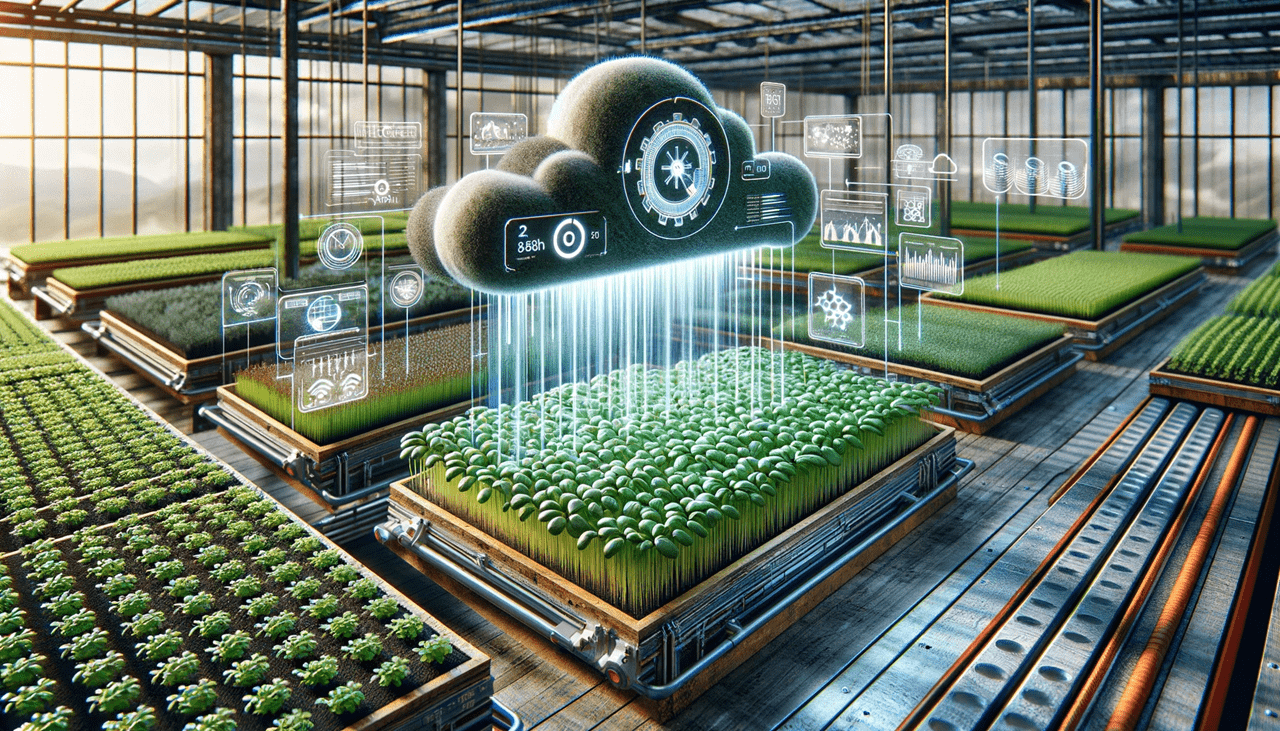
People across the globe are increasingly aware of the health and environmental impacts of food choices, which contributes to these trends.
| North America (USA and Canada) | In urban areas like New York, San Francisco, and Toronto, the popularity of microgreens is closely tied to the farm-to-table movement. These densely populated cities have witnessed a surge in rooftop and indoor urban farming initiatives, where microgreens are a preferred crop due to their low space requirements and quick turnaround time. |
| Europe (Netherlands and Scandinavia) | The Netherlands, known for its innovative agricultural practices, has been at the forefront of microgreen cultivation in controlled environments. Similarly, with their long, dark winters, Scandinavian countries have adopted indoor cultivation techniques for microgreens, integrating them into local cuisines as a source of fresh produce year-round. |
| Asia (Singapore and Japan) | In Singapore, the push towards self-sufficiency in food production has led to a growing interest in vertical farming of microgreens. With its meticulous approach to food, Japan has seen a rise in microgreen usage in traditional dishes, valuing their aesthetic appeal and nutritional benefits. |
| Australia and New Zealand | There’s a growing trend in cities like Sydney and Auckland towards organic and locally sourced foods, with microgreens becoming popular in home kitchens and high-end restaurants. The region’s emphasis on sustainable living aligns well with the environmentally friendly aspects of growing microgreens. |
| Latin America (Brazil and Mexico) | Urban farming initiatives in cities like São Paulo and Mexico City incorporate microgreens to address food security and provide fresh produce in food deserts. The adaptability of microgreens to small-scale urban agriculture makes them suitable for these regions. |
| Africa (Kenya and South Africa) | In Nairobi and Johannesburg, there is a growing interest in microgreens among young entrepreneurs and urban farmers. This trend is supported by the growing awareness of nutrition security and the need to solve youth unemployment through intelligent, innovative solutions. Initiatives like BeGreen Africa and Engaging Kenyan Youth in Agriculture and Nutrition (EKYAN) foster green entrepreneurship and equip young people with climate-smart and regenerative farming skills. These programs empower young entrepreneurs and address critical environmental issues, thereby contributing to developing a sustainable economy in these regions [9]. |
Urban farming initiatives and home gardening trends have also contributed to this market growth, catering to the desire for locally sourced produce. The adaptability of microgreens to small-scale and indoor farming makes them particularly appealing to urban dwellers. Furthermore, innovative culinary uses of microgreens in diverse cuisines have broadened their appeal beyond health enthusiasts to the general public.
This shift in the market indicates a more profound change in consumer values, where the emphasis on food quality, nutritional benefits, and sustainable practices takes precedence. As a result, the microgreens industry is poised for continued growth and diversification.
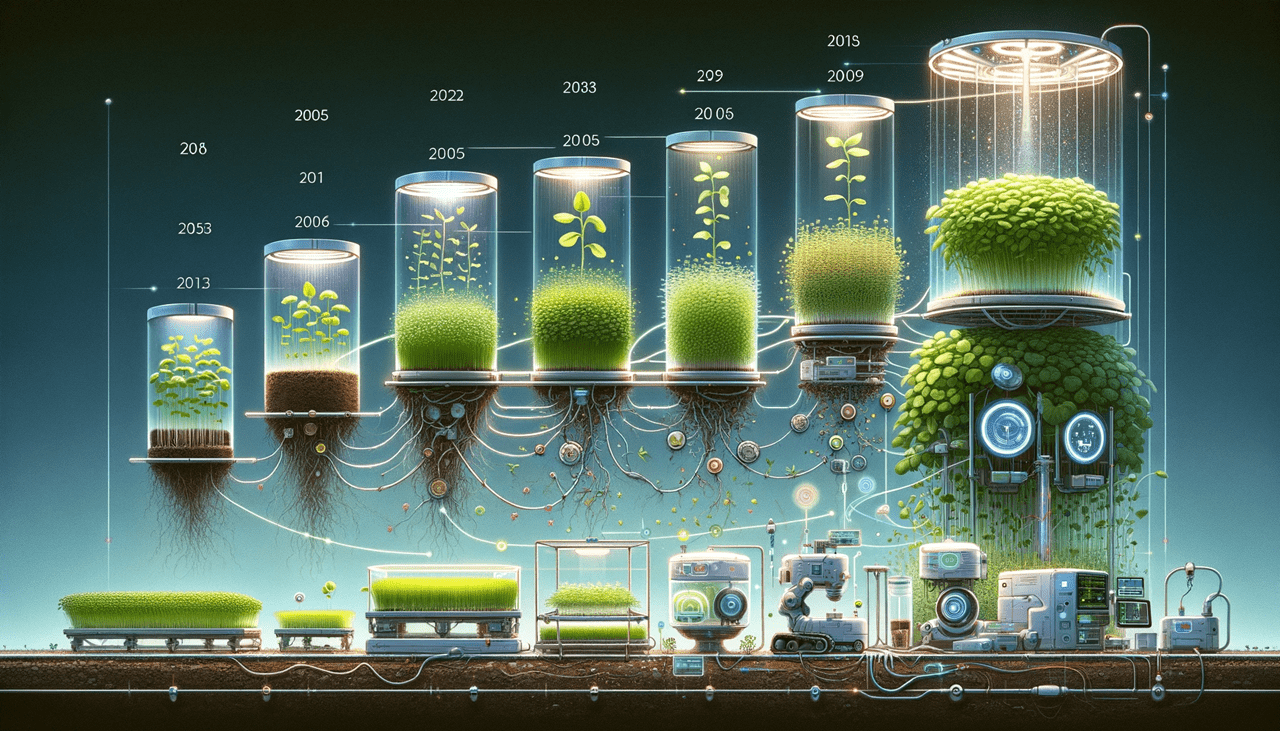
The technological innovations in microgreen farming primarily focus on enhancing efficiency and productivity. Artificial intelligence (AI) and machine learning aid in precisely monitoring environmental factors such as humidity, temperature, and light, ensuring optimal growing conditions. Automation plays a crucial role, with systems automating tasks like watering and lighting, thereby reducing manual labor and ensuring consistency in growing conditions.
Automated watering and nutrient delivery systems have been developed, allowing for precise control and reduced waste. These technologies exemplify the integration of cutting-edge developments in microgreen farming, streamlining processes, and improving sustainability.
Additionally, advancements in LED lighting technology have been significant, as they allow for energy-efficient and practical lighting solutions tailored to the needs of different microgreen varieties. LED lighting technology has also advanced to provide specific light spectra that cater to different growth stages of microgreens, enhancing their growth and nutritional value.
Collectively, these technologies contribute to more sustainable and scalable microgreen farming practices.
The Future of Microgreens
The future of microgreens looks promising, with several trends and research areas poised to shape its evolution. Increased use of technologies such as AI and the Internet of Things for precision agriculture, which allow more effective utilization of resources and optimizing yields, is a key trend. Another area of focus is the development of new microgreen varieties through genetic research, catering to diverse culinary and nutritional needs. Additionally, there’s growing interest in exploring the therapeutic potential of microgreens in diet and health. These trends and the ongoing push for sustainable agriculture practices suggest a bright future for microgreen cultivation and consumption.
Market research reports that provide insights into the popularity and cultivation of microgreens, highlighting consumer trends and regional specifics:
Microgreens Market Analysis, Growth, Forecast to 2030:
- The global microgreens market was valued at USD 1.8 billion in 2022 and is estimated to reach USD 2.6 billion by 2031, growing at a CAGR of 11%.
- Microgreens are primarily grown using indoor vertical and greenhouse farming methods.
- Europe is the fastest-growing market, while North America holds the largest market share.
Microgreens Market Research, 2028:
- The global microgreens market was valued at $1.3 billion in 2019 and is projected to reach $2.2 billion by 2028, growing at a CAGR of 11.1%.
- Indoor vertical and greenhouse farming are majorly used for microgreens production.
- The market is segmented by type, farming, end-user, and region, with North America dominating the global market.
Microgreens Market Size, Share And Analysis Report, 2030:
- The global microgreens market size was estimated at USD 2.59 billion in 2022 and is expected to grow at a CAGR of 11.9% from 2023 to 2030.
- The commercial greenhouse segment dominates the industry.
- The market benefits from the growing cosmetics and personal care industry, where microgreens-based ingredients are used.
These reports provide a comprehensive overview of the current state and prospects of the microgreens market, including insights into regional trends, cultivation methods, and consumer preferences.
Practical Applications for Microgreens
Here’s a simple recipe using microgreens and a list of steps for home-growing microgreens. These can be useful for engaging your audience with practical and actionable advice.
Easy Microgreens Salad Recipe
Ingredients:
- 2 cups mixed microgreens (e.g., radish, kale, arugula)
- 1 ripe avocado, sliced
- 1/2 cup cherry tomatoes, halved
- 1/4 cup nuts (e.g., almonds or walnuts), toasted
- 2 tablespoons olive oil
- 1 tablespoon lemon juice
- Salt and pepper to taste
- Optional: crumbled feta cheese or goat cheese
Instructions:
- Prepare the Microgreens: Rinse the microgreens gently and pat them dry.
- Combine the Salad: Mix the microgreens, sliced avocado, and cherry tomatoes in a wide bowl. Add Nuts: Sprinkle the toasted nuts over the salad.
- Dressing: Blend the lemon juice with the olive oil in a little bowl. Season with salt and pepper.
- Toss, then Serve: Drizzle the dressing over the salad and toss gently to combine. Add cheese if desired. Serve immediately.
How to Plant Microgreen Plants at Home: A Step by Step Guide
- Select Your Seeds: Choose microgreen seeds such as radish, kale, arugula, or basil. Opt for organic seeds if possible.
- Prepare Your Container: Use two shallow trays, one with the seeds and medium, with drain holes, sitting in the other that contains water about 2-3 centimeters below the bottom. You don’t want water touching the bottom of the seeds container. Check water levels once a day.
- Sow the Seeds: Fill the top tray with a 1-2 inch layer of moistened potting soil or coconut coir. On the surface of the soil, apply a uniform layer of seeds. Use a seed spreader. Lightly press them into the soil, but not cover them with additional soil.
- Provide Light and Warmth: Place the container in a location with good natural light or under a grow light. Maintain a consistent temperature of 18-24°C (65-75°F).
- Keep the Soil Moist: Continue to water gently. Avoid wetting the foliage directly to prevent mold growth.
- Watch Them Grow: Microgreens typically germinate in 3-7 days. Continue to mist the soil as needed.
- Harvest Time: When the microgreens are 1-3 inches tall, about 7-14 days, they will have developed their first true leaves. They are ready to harvest.
- Harvesting: Use clean scissors to snip the microgreens above the soil level.
- Enjoy Fresh: Add your freshly harvested microgreens to salads, sandwiches, or as a dish garnish.
Key Takeaways
Microgreens have transitioned from a niche market to a mainstream crop, reflecting significant growth and potential. This journey, marked by technological advancements, expanding varieties, and a focus on sustainability, highlights their increasing relevance in modern agriculture and diets. Microgreens are a sign of innovation and adaptability in the face of evolving consumer demands and environmental challenges when we look to the future. Their story, from humble beginnings to widespread popularity, encapsulates a larger narrative of progress and potential in agriculture.
Related Questions
How can I start growing microgreens at home?
Home growing of microgreens is quite feasible. Start with a simple setup using shallow trays, a suitable growing medium, and a few microgreen seeds like radish or broccoli. Ensure they get sufficient light and water.
Are microgreens organic?
Microgreens can be grown organically, but it depends on the growing practices. They can be considered organic if grown using organic seeds and without synthetic pesticides or fertilizers.
Can microgreens be a profitable business?
Microgreens can be profitable due to their high value and short growth cycle. However, success in the microgreens business requires careful market research, efficient growing practices, and effective marketing strategies.
How do microgreens fit into a sustainable lifestyle?
Microgreens are ideal for sustainable living due to their low space and resource requirements. Growing them reduces food miles and can be done using eco-friendly methods.
Are there any health risks associated with microgreens?
Generally, microgreens are safe and healthy. However, like any fresh produce, they should be washed properly before consumption to minimize the risk of food-borne illnesses.
References
- Roe, Nancy E. “Growing microgreens: maybe the ultimate specialty crop!.” Proceedings of the Florida State Horticultural Society. Vol. 119. 2006. https://journals.flvc.org/fshs/article/download/86135/83051
- USDA. “Microgreens: A New Specialty Crop.” Agricultural Research Service, US Department of Agriculture, 2014.
- Kamal, Khaled Y. “Evaluation of Growth and Nutritional Value of Brassica Microgreens.” *Physiologia Plantarum*, vol. 169, no. 4, Aug. 2020, p. 32129889. PubMed, https://pubmed.ncbi.nlm.nih.gov/32129889/.
- Xiao, Zhenlei, et al. “Assessment of Vitamin and Carotenoid Concentrations of Emerging Food Products: Microgreens.” Journal of Agricultural and Food Chemistry, vol. 60, no. 31, 8 Aug. 2012, p. 22812633. PubMed, https://pubmed.ncbi.nlm.nih.gov/22812633/.
- Kathi, Shivani. “Vitamin C Biofortification of Broccoli Microgreens and Resulting Nutritional Benefits.” Frontiers in Plant Science, vol. 14, 3 Mar. 2023, p. 36938024. PubMed, https://pubmed.ncbi.nlm.nih.gov/36938024/.
- Lanoue, Jason. “Continuous Lighting Can Improve Yield and Reduce Energy Costs While Maintaining Nutritional Contents of Microgreens.” Frontiers in Plant Science, vol. 13, 30 Sept. 2022, p. 36247650. PubMed, https://pubmed.ncbi.nlm.nih.gov/36247650.
- Renna, Massimiliano. “The Use of a Nutrient Quality Score is Effective to Assess the Overall Nutritional Quality of Microgreens.” Foods (Basel, Switzerland), vol. 9, no. 9, 2 Sept. 2020, p. 32887492. PubMed, https://pubmed.ncbi.nlm.nih.gov/32887492/.
- Wang, Zhen-Fang. “Toxicological Effects of Enrofloxacin and Its Removal by Freshwater Micro-Green Algae Dictyosphaerium sp.” Huan Jing Ke Xue= Huanjing Kexue, vol. 41, no. 6, 8 June 2020, p. 32608784. PubMed, https://pubmed.ncbi.nlm.nih.gov/32608784/.
- UNICEF Kenya. “New Green Entrepreneur and Agriculture Initiatives Launched to Augment Livelihoods for Youth.” UNICEF, 12 Aug. 2023, www.unicef.org/kenya/press-releases/new-green-entrepreneur-and-agriculture-initiatives-launched-augment-livelihoods.
